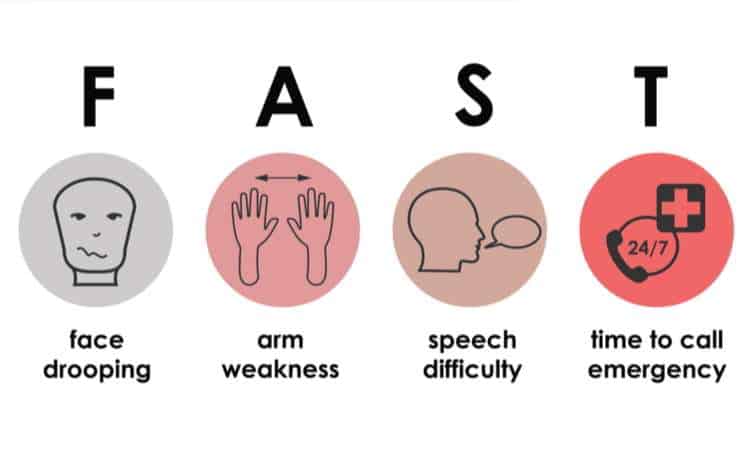This year, during National Stroke Week, as Australia celebrates ‘everyday Australians who know and can recognise the signs of stroke’, Maryann James of MCIE recounts how a phone call from a dear colleague made her realise that stroke can happen to anyone at any time, and that recognising signs of a stroke at the earliest possible sign, can make all the difference to the survivor’s life.
“When my colleague called me on a weekend earlier this year and said that her mum is feeling dizzy and is refusing to eat, I got a bit concerned and I obviously wanted to know more about her condition. My colleague, who is also a dear friend, was quite distressed at the time. As a First Aid trainer, my initial reaction was to start asking more questions about her mum’s physical condition” Maryann

Maryann asked her colleague (we respect their privacy and will keep their details confidential) if her mum had any blood pressure issues, or if she was anemic. When she confirmed that her mum suffers from low blood pressure (hypoglycemia), Maryann first advised her colleague to give her mum some sugary water and a little snack and see if she recovers. When her colleague’s mum still did not respond well to it, then Maryann decided to check for symptoms of stroke.
“At this stage, while I did not want to alarm my colleague, I wanted to check for symptoms of stroke first, because if she indeed had suffered a stroke, then time was of critical importance. There is not a moment to lose then. With the help of my colleague on the other end, I asked her to perform what is known as a F.A.S.T treatment (Face, Arms, Speech, Time) to check for signs of a stroke,” said Maryann.

Acting F.A.S.T. can help stroke patients get the treatments they desperately need.
As the first check, Maryann asked her colleague to see if her mum’s facial muscles were drooping or if there are any signs of weakness. When the colleague confirmed that her mum’s facial muscles were fine and there were no signs of drooping, Maryann then asked her to have her mum raise both her arms and check if one arm drifts downward. When the colleague confirmed that her arms movement were also fine,
Maryann then asked her colleague to ask her mum some questions and also to put the phone on speaker so she could hear them both. It was then that Maryann realised that her mum’s speech was slurred, almost inaudible.
“It was then that I told my colleague that her mum may have suffered a stroke and that she needs immediate medical attention. She was then transported to the hospital and the stroke team was also alerted to attend to her. She was immediately taken into surgery where the doctors found out that she had suffered a hemorrhagic stroke after one of the vessels in her brain had ruptured,” said Maryann.
“I believe that recognising the signs and symptoms for stroke that day and then seeking immediate medical attention, helped save a life. The doctors informed us that any delay in seeking treatment would have caused an irreversible damage to her brain and could also have been fatal. Now, when I look back, I think my colleague did brilliantly and, between us, we saved her mum’s life. Her mum is now recovering after the surgery- almost 90% back to normal living and is progressing well with each day.”
According to data, over 475,000 Australians are living with the effects of stroke. By 2050, this is predicted to increase to one million*. Stroke can happen to anyone at any time, and as a family member, friend, colleague, neighbour or a passerby, we can also help. If we are aware of the signs and symptoms, we can seek the right help at the right time and like Maryann, we could save someone’s life.
Learn more about stroke here.




